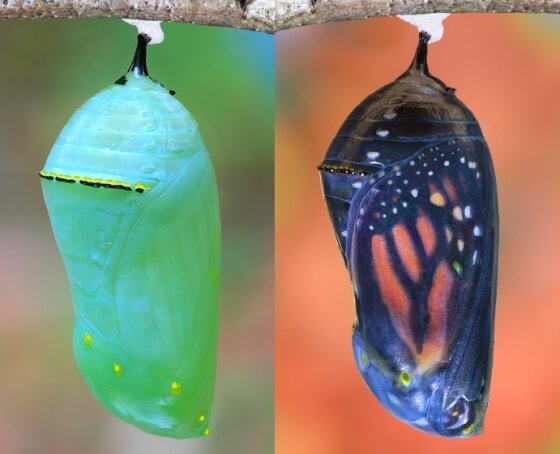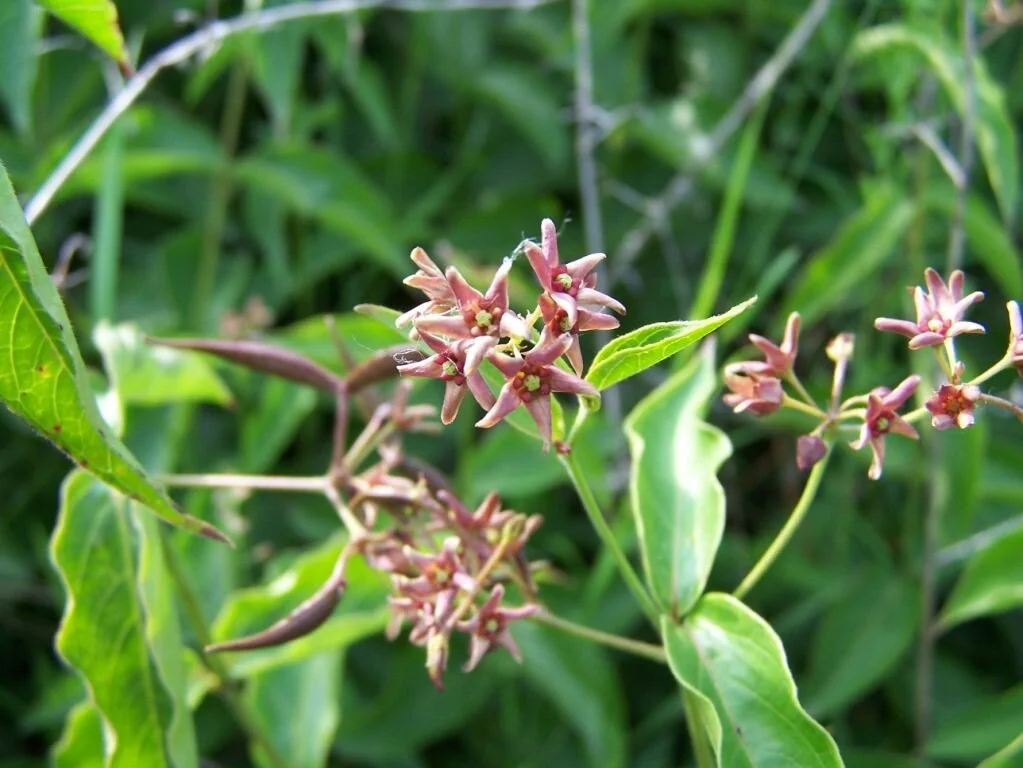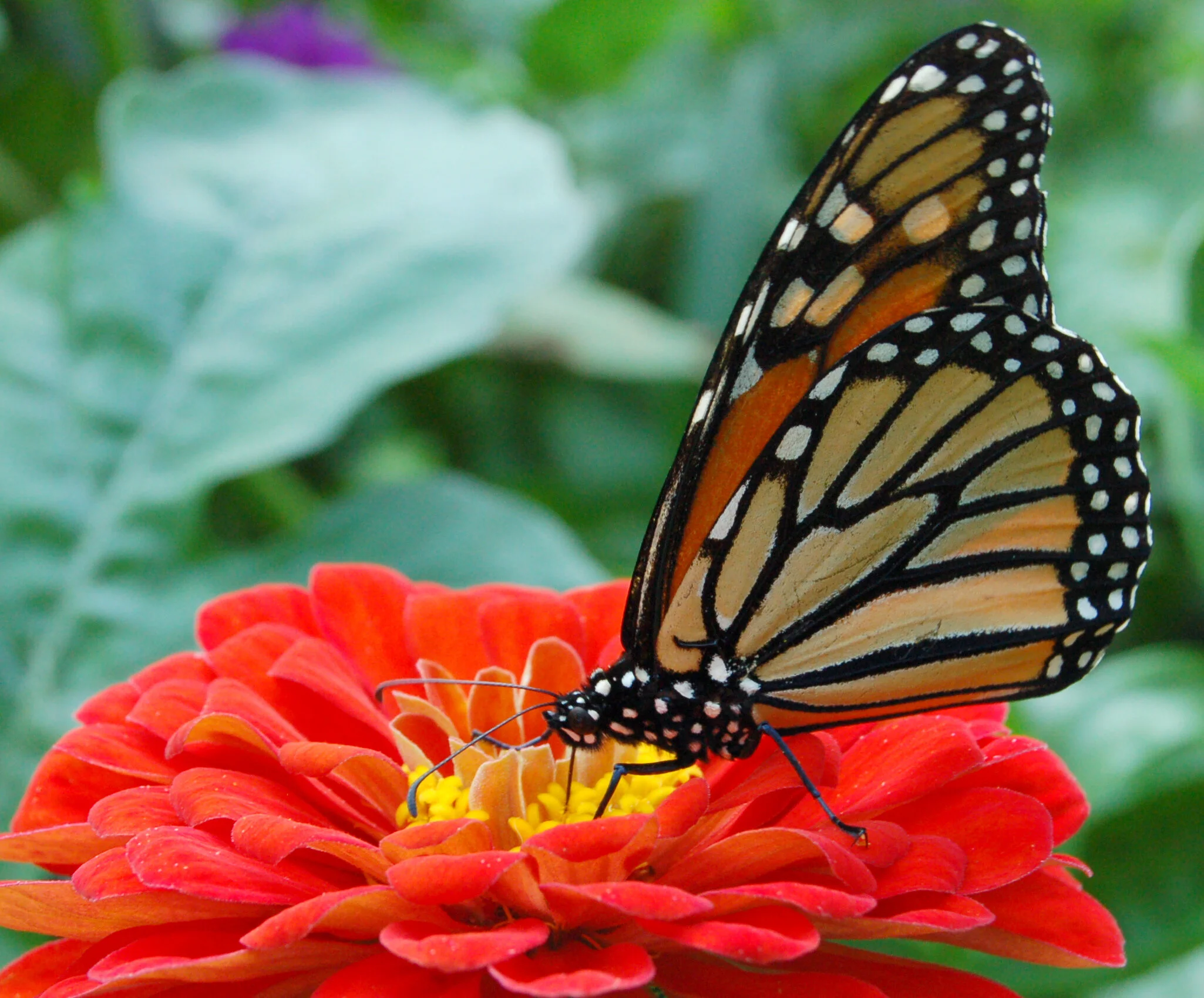Why Native Plants? Part 1 - Native Plants as Food
In recent years, the value of landscaping with native plants has been put in the spotlight. There are so many reasons to use native plants, that listing these reasons will be hard to do in a single post, without risking an oversimplification of their roles, or without losing the reader’s interest.
So I have decided to frame this as a series - “Why Native Plants”? Part 1 of this series will attempt to illustrate the important role of “Native Plants as Food”, focusing specifically on foliage as edible matter. A future post will further discuss the nourishing capacity of plants, in terms of nectar and pollen production.
So let’s have at it!
What’s a Native Plant?
To begin this topic, let us first define what a native plant is, in relation to other terms;
Native plants are plants that ‘have shared an evolutionary history with the plant and animal communities in your ecoregion or biome’ (Tallamy, pg 90).
Introduced plants (or exotic species) are plants that have come from different continental land masses that do not share an evolutionary history with its planted locale.
Naturalized refers to non-native (introduced) species that have been able to successfully establish and reproduce itself in a region without human help.
Some of the most common types of introduced plants in our developed landscapes are fairly tame, in the sense that they don’t reseed or spread rapidly. Examples include hostas and many types of hydrangeas, both of which originated in China.
On the other hand, some introduced species can be uncooperative bullies and their ability to rapidly spread displaces native plants. These we will refer to as ‘invasive species’. A few examples of invasive species (and their origins) that most threaten the biodiversity of eastern Ontario include; Buckthorn (Eurasia), Norway Maples (Europe), Japanese Knotweed (Eurasia), Garlic Mustard (Europe), Dog Strangling Vine (Eurasia), Periwinkle (Europe) and Phragmites (Eurasia and Australia). There are interesting stories on why these plants were imported to the ‘new world’ of North America, which we will share in future plant profiles.
Native versus Introduced
When considering the definitions of native versus introduced, the glaring difference is the sharing of evolutionary histories (or not) with local ecosystems. This is significant for a number of reasons, most importantly, the role of plants as food. To understand this, it is important to have a general overview of the soil-plant-animal food web.
Native Plants and the Food Web:
What is a food web? It is a map that illustrates the interconnectedness of all living things, and how energy is transferred through the food chain. Essentially, what-eats-what.
The primary source of energy on earth is sunlight. Through photosynthesis, plants convert the sun’s energy (plus soil, water and carbon dioxide) into edible matter. So we have solar energy packaged as physical matter in the form of plant life, which is great. But how does this energy move through the food chain? The key first step lies with the cogs that run the ecological machine - insects.
Insects (more specifically arthropods) represent about 50% of animal biomass on earth. They outweigh humans by a factor of over x17. Insects feed on plant life to build mass and form the very important second stage of the food web. Unfortunately, insect populations have been rapidly declining, with a big factor owing to the fact that the native plants that support them are disappearing from the wild. This phenomenon will be discussed later in the post.
There are thousands of different types of insects native to North America, but the one that arguably plays the most important role are caterpillars. Caterpillars broadly refers to the early life stages (larva) of butterflies, moths and some types of flies. Much of their importance is described in Chapter 8 of Doug Tallamy’s book “Nature’s Best Hope”, but for the sake of this post, here’s a quick synopsis.
The reason caterpillars are the focus of discussion is because of their;
Population - 14,000 species native to North America in the lepidoptera (butterfly and moth) family. This number is less than beetles (25,000 species). However, beetles are made of a hard chitlin that make them indigestible to many birds, so they don’t play as significant a role in the food web. Caterpillars, on the other hand, are essentially soft bags of food ready to be eaten. Plus, unlike beetles who spend most of their life below ground, most caterpillars spend their life feeding on the leaves of plants, and are therefore more readily accessible to predators.
Size - Caterpillars are larger than most other insects. It would take roughly +200 aphids to equal the mass of one caterpillar. It would be energy inefficient for a bird to hunt that many insects for the same caloric intake.
Nutritional value - Caterpillars are more nutritious than other insects. They are high in protein and fats and they are the best source of carotenoids in birds (Eeva et all 2010). Carotenoids are crucial for birds to improve overall health, including pigmentation of their feathers, so that they can successfully attract mates and reproduce. Caterpillars contain more than x3 carotenoids than any other insect (Eeva et al, 2000). So if the logic follows, caterpillars are not only optional components of breeding bird diets, they are essential (Tallamy).
Attractiveness to birds - Most of North America’s terrestrial bird species, some 96% in fact, rear their young on insects, rather than seeds and berries (Peterson 1980). Caterpillars make up a large portion of that figure.
For reference, the following figures are provided to give a sense of how many caterpillars are needed to sustain nesting birds;
Wilson’s warbler pair - about 812 caterpillars/day (stewart, 1973)
Bobolinks - 840/day (Martin 1971)
Sapsuckers - 4260/day (De Kiriline Lawrence 1967)
Downy woodpeckers - 4095/day (De Kiriline Lawrence 1967)
Hairy woodpeckers - 2325/day (De Kiriline Lawrence 1967)
Looking at these numbers, it’s astounding to consider how many caterpillars are required to support even a single pair of breeding birds and their nestlings! And the food web doesn’t end with birds, who are food for more complex, predatory organisms like hawks, snakes and foxes.
A single pair of breeding chickadees must find 6,000 to 9,000 caterpillars to rear one clutch of young. Image and stat courtesy of Doug Tallamy.
But how does this factor into native versus non-native debate? It comes back to the point of shared evolutionary history. Native wildlife - including caterpillars - depend on native species (more so than non-native species) to provide the essential services necessary for their survival. Why? Because certain native plants are only edible to certain types native wildlife.
A Plant’s Defence
Generally speaking, plants do not want to be eaten. If all living things did eat them, they would be feasted to extinction. To avoid being eaten, plants develop unique chemical defence mechanisms to make them unpalatable to wildlife. Toxins and tannins produced through photosynthesis are stored in the plant matter, and can cause sickness (or worse) to the wrong animal that eats it. This unpleasant experience will ward said species off from grazing this plant in the future. But some types of wildlife that have evolved in tandem with vegetation have developed digestive tracts that enable them to circumvent a plant’s defence mechanisms and feed on it without repercussion.
Let’s use a local example to illustrate this phenomena -
Monarch Butterfly and the Native Milkweed Plant
Following their long migration from their overwintering location in the mountains of central Mexico, the Monarch Butterfly returns to temperate northern regions to breed. Upon return, the Monarch specifically chooses the leaf of a butterfly milkweed (Asclepias spp.) on which to lay their egg, for the following reasons. Once the Monarch egg hatches, the caterpillar emerges and crawls out near the end of the milkweed leaf. The caterpillar chews through the midrib of the leaf. A milky (hence the name milkweed), sticky latex substance oozes from the cut part of the leaf. This substance would gum up the mouth and kill your average insect. But not the Monarch, who shows amazing behavioural adaptation in their feeding habit. Once the midrib is severed, the caterpillar stops chewing and moves towards the tip of the leaf, where the substance has stopped flowing. From there, the caterpillar can feast on the leaf matter with no concern of being harmed by the plant. If the caterpillar is able to avoid predation from birds or other insects, it is able to move into the second stage of its life cycle - the chrysalis stage. During this stage, the caterpillar spins a cocoon on a milkweed and begins the process of metamorphosis. After about 8-15 days, the caterpillar emerges as a butterfly, colourful wings and all. In its adult life, the butterfly feeds on the nectar of the milkweed’s summer flower for sustenance. So from infant to maturity, the Monarch holds a mutualistic relationship with the Milkweed.
A Monarch egg laid on the back of a milkweed plant in early summer. Photo courtesy: MSU
Upon hatching from its egg, the Monarch caterpillar seeks sustenance from the milkweed leaf. In this photo, the caterpillar is seen chewing the midrib of the leaf. Note the milky substance - this is the milkweed’s defence mechanism from prey. The Monarch circumvents this mechanism by severing the flow of the sticky substance, and allows it to eat the tip of the leaf without concern for harm.
The second stage of the Monarch is its chrysalis stage. The caterpillar spins a cocoon on the bottom side of the milkweed leaf to begin its metamorphosis to butterfly. Image courtesy of Steven Russell Smith.
Upon emergence as a butterfly, the Monarch relies on nectar from the flowering milkweed plant (Asclepias tuberosa shown here) for sustenance. The distinct orange colouring of the butterfly is attributed to the toxins ingested from the milkweed plant as a caterpillar.
I hope this example is helpful in illustrating just one of the many instances of codependence between native flora and fauna. However, it does not explain how introduced species may disrupt this routine.
Let’s examine how the lifecycle of the Monarch is affected when the native milkweed plant is replaced with the non-native species.
Monarch Butterflies and the Non-Native Dog Strangling Vine
The native range of the dog strangling vine (DSV) is Eurasia. It’s leaf morphology is fairly similar to that of the milkweed plant. Because of these similarities, it has been documented that Monarchs have mistaken the DSV for milkweed, and have laid eggs on that plant. Unfortunately, the chemical makeup of the DSV is different from the milkweed. So much so that the caterpillar does not have the digestive means to feed on the leaf of the DSV. Consequently, with no nourishment, the caterpillar is unable to feed and will die without being able to complete its life cycle. The consequences are compounded, as the DSV has been very effective at colonizing a variety of spaces in our landscape, including environments where milkweed are commonly found. So not only does the DSV not nourish the Monarch, but it also eliminates its food sources.
Monarchs often confuse the invasive dog strangling vine (Cynanchum rossicum) for the milkweed plant, and will lay eggs on it. Unfortunately, the leaves of the DSV are inedible to Monarch caterpillars, and they will die without being able to complete their lifecycle.
Insect Populations are in Decline
The examples above of the Monarch butterfly interacting with native and non native plants is just one example of many that illustrate how insect populations are being affected. Simply put, the native plants that insects rely on are rapidly being replaced by introduced species that do not provide the means to support the completion of lifecycles.
Studies estimate that since 1970, the global insect population has been reduced by 50%. Flying insect populations have decreased 76% in the last 27 years. These populations continue to decline 1-2% annually. Insects are the fabric of which the tree of life is built, so a collapse of their populations threaten the collapse of ecosystems. In fact, these figures suggest that we are well on track for a ‘sixth mass extinction event’, which will be known as the Anthropocene extinction.
But there is good news. Through thoughtful planting and land management, homeowners can create the support systems that can enable local insect populations to rebound. The mission at Bombus is to offer services and share resources that foster a better stewardship and protection of our precious natural resources.
Debate - are all introduced species bad?
Is that to say that plants originating outside of North America should not be used at all in our landscapes? Not at all! ...If used in moderation.
Introduced species are already here, and so it is unreasonable to think that they can be eliminated overnight. In fact, the disappearance of some species might have disastrous consequences, as it would open gaps where truly aggressive weeds could establish and wreak havoc. Plus, some introduced species hold special meaning to us. For example, hydrangea, dahlia and zinnia blooms provide us with visual delight, and lilacs or mock oranges add fragrance to our summer air.
Monarch butterfly on a non-native Zinnia flower. Although the Zinnia alone is unable to support the completion of a Monarch’s lifecycle, it does provide sustenance in the form of nectar, which is necessary for the butterfly to complete their fall migration from Canada to Mexico.
Additionally, the instantaneous meeting of species never before encountered represents a new field of study coined Novel Ecosystems. It is entirely possible that great advancements in the fields of ecology and horticulture can be made in this new age of discovery. For example, European plants that are habituated to tough conditions (drought, salt) may be useful for our urban streets and shopping centres, where few native plants are equipped to survive.
In a recent webinar, Doug Tallamy alluded to a scientific study that suggests - in order to maintain wildlife populations, your landscape needs to be composed of at least 70% native species. That other 30% (ideally less) offers plenty of room for artistic freedoms. The parting message being to understand the value of native plants, and to use all else sparingly, if environmental well-being is your mission. So it seems that we simply need to modify, not fully compromise, our current habits to have healthy landscapes.
Conclusion
What we wish to emphasize is that, in nature, nothing exists in isolation. Floral-faunal associations exist all around us. Through science, we learn more about these fascinating interactions everyday. The little things that are hard to observe with the naked eye can play a role bigger than we could ever imagine. In this instance its insects, who historically have received an unfair reputation as being nothing more than pests.
Our mission becomes clear when we understand that to have living landscapes, we need to nurture those time tested relationships that exist between native plants and wildlife. That means putting an emphasis on using more beneficial plants in our landscapes, and managing those that are harmfully invasive.
Through this post, I hope we have provided you with information that will encourage you to think deeply about what you plant next. Your actions have far reaching effects, so let’s plant with a purpose to maximize the positive benefits of those actions.
Please follow along as we will offer suggestions on what you can do to correct these negative trends, and welcome the wild in.
Thanks for reading!






